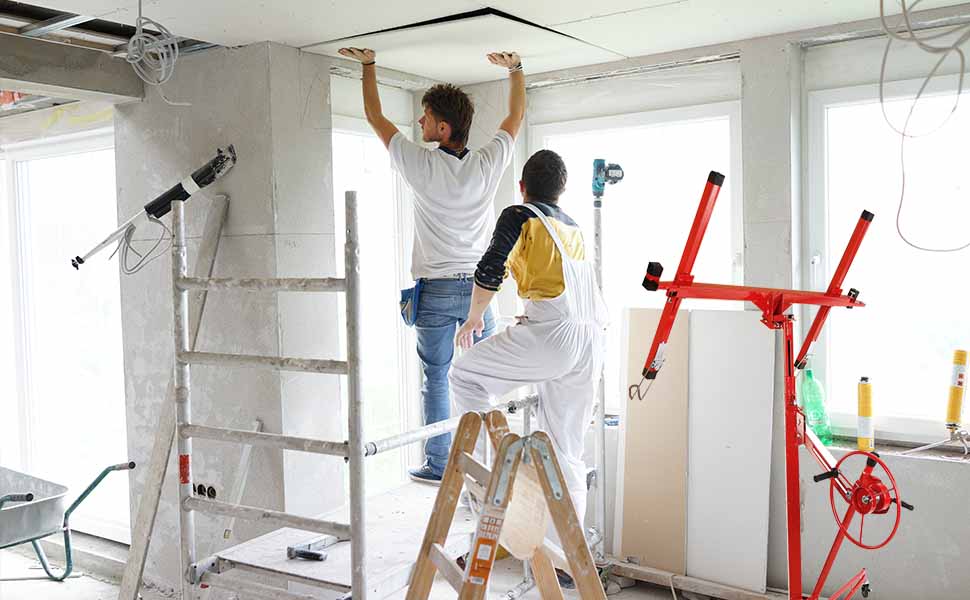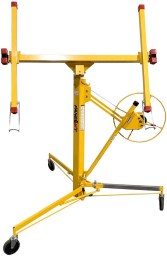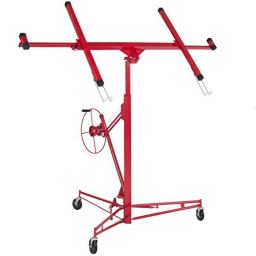Contact Me: howtopbestinfo@gmail.com
Contact Me: howtopbestinfo@gmail.com

Drywall lifts are a specialized lifting and positioning tool used for the installation of drywall. They provide an easy way to lift, hold, and install large sheets of gypsum board onto walls or ceilings without needing extra muscle power from other people.
Dry wall lifts have become increasingly popular in recent years because they make it much easier to complete heavy-duty tasks such as hanging sheetrock on high ceiling areas with precision accuracy.
The main benefit that comes with using these tools is their ability to reduce fatigue by eliminating the need for manual labor when installing drywalls—something especially useful if you plan on tackling larger projects like putting up several panels at once!
The primary advantage lies in its design; most models feature adjustable arms which can be extended outwards so you can easily hang multiple pieces simultaneously while still keeping them level and properly aligned along studs/joists within your wall frame structures (or even better - directly against existing frames).
In addition, there’s usually some sort of wheeled platform attached beneath each arm allowing one person alone do all this work singlehandedly – no more asking friends/helpers over just move a few boards around every time something needs adjustment!

Best value overall, this is the greatest option for all buyers who want the best quality product.
Buy it on Amazon

Also very good option for users who are serious about high standard and taste.
Buy it on Amazon

Strike a perfect balance between price and quality, this item is for people who want both.
Buy it on Amazon

Perfect Alternative for products other than those mentioned above, give it a try!
Buy it on Amazon

Affordable price and well accepted quality, great deal for who have a tighter budget.
Buy it on Amazon
Drywall lifts have been around since the 1950s, when they were first used to help hang large sheets of drywall. The tool has evolved over time and is now a popular choice for contractors due to its convenience and versatility in hanging both heavy-duty gypsum boards as well as lightweight plasterboard walls.
The lift consists of an adjustable arm that holds one end of a sheet while another person stands on the other side holding it up against the wall or ceiling until screws can be inserted into place.
Drywall lifts are typically constructed from steel with wheels at each corner allowing them to easily move across uneven surfaces like concrete floors without damage or stress on either party involved in hoisting material onto ceilings or higher levels within buildings under construction.
Some models feature telescoping arms which allow users adjust lengths depending upon their specific needs during installation projects, making these devices even more versatile than ever before!
Due largely in part because modern day versions come equipped with safety features such as automatic brakes designed prevent accidental falls (a common issue faced by individuals attempting manual lifting), this type equipment has become increasingly prominent among commercial building professionals who need reliable ways get job done quickly efficiently – ultimately saving them both money labor costs along way too!
To sum up, a drywall lift is an essential tool for anyone looking to make their home construction projects easier and more efficient. This type of device will allow you to safely install large sheets of drywall without having to worry about dealing with cumbersome ladders or scaffolding equipment. The added stability that the lifts provide makes them ideal for hanging heavier materials such as plasterboard walls and ceilings, while also making it much simpler when working on larger areas like basements or attics where access can be tricky at times due to height restrictions.


Etiam porta sem malesuada magna mollis euismod. Cras mattis consectetur purus sit amet fermentum. Aenean lacinia bibendum nulla sed consectetur.
2045-06-09 00:00:00.000000
2045-08-02 00:00:00.000000